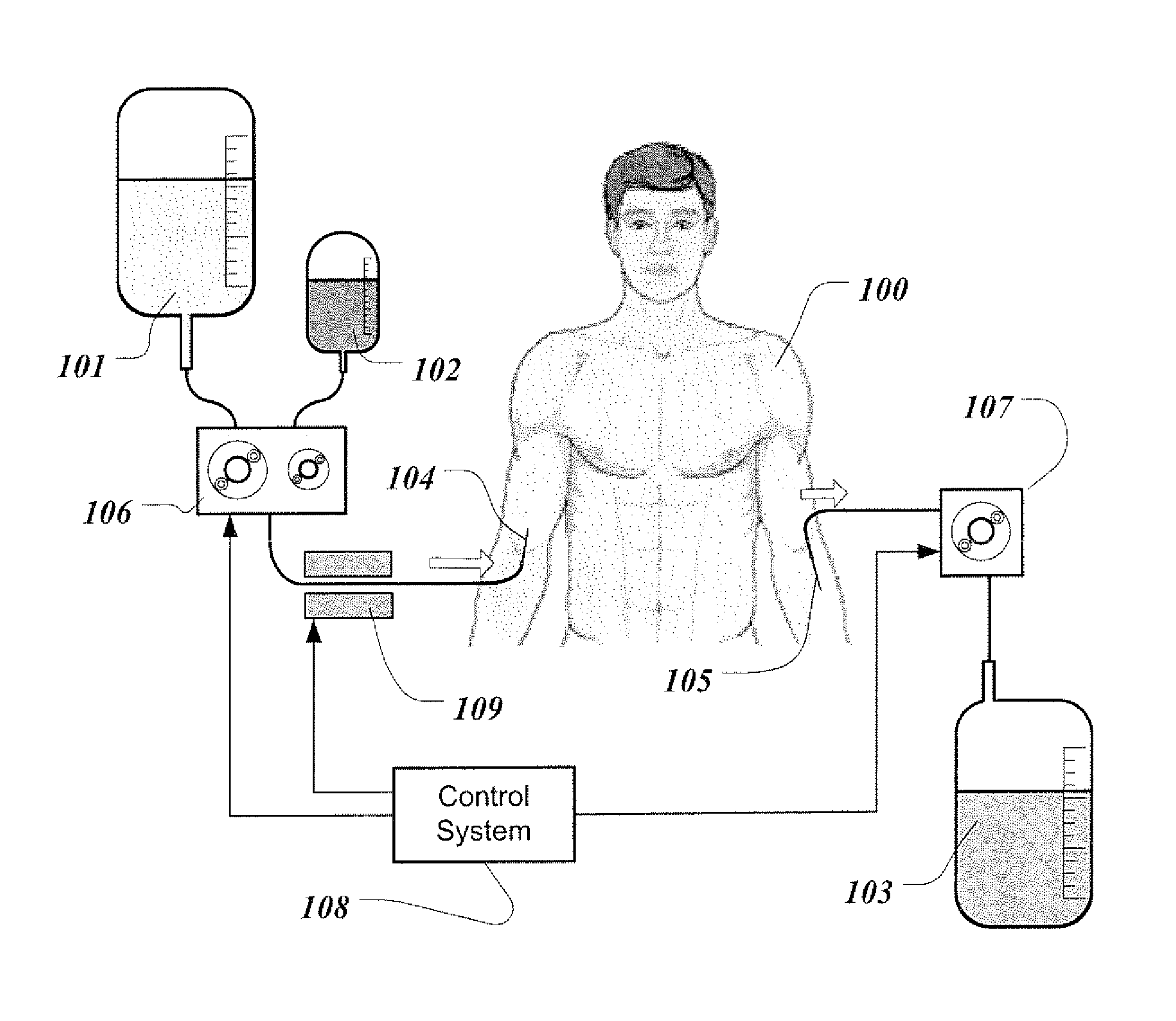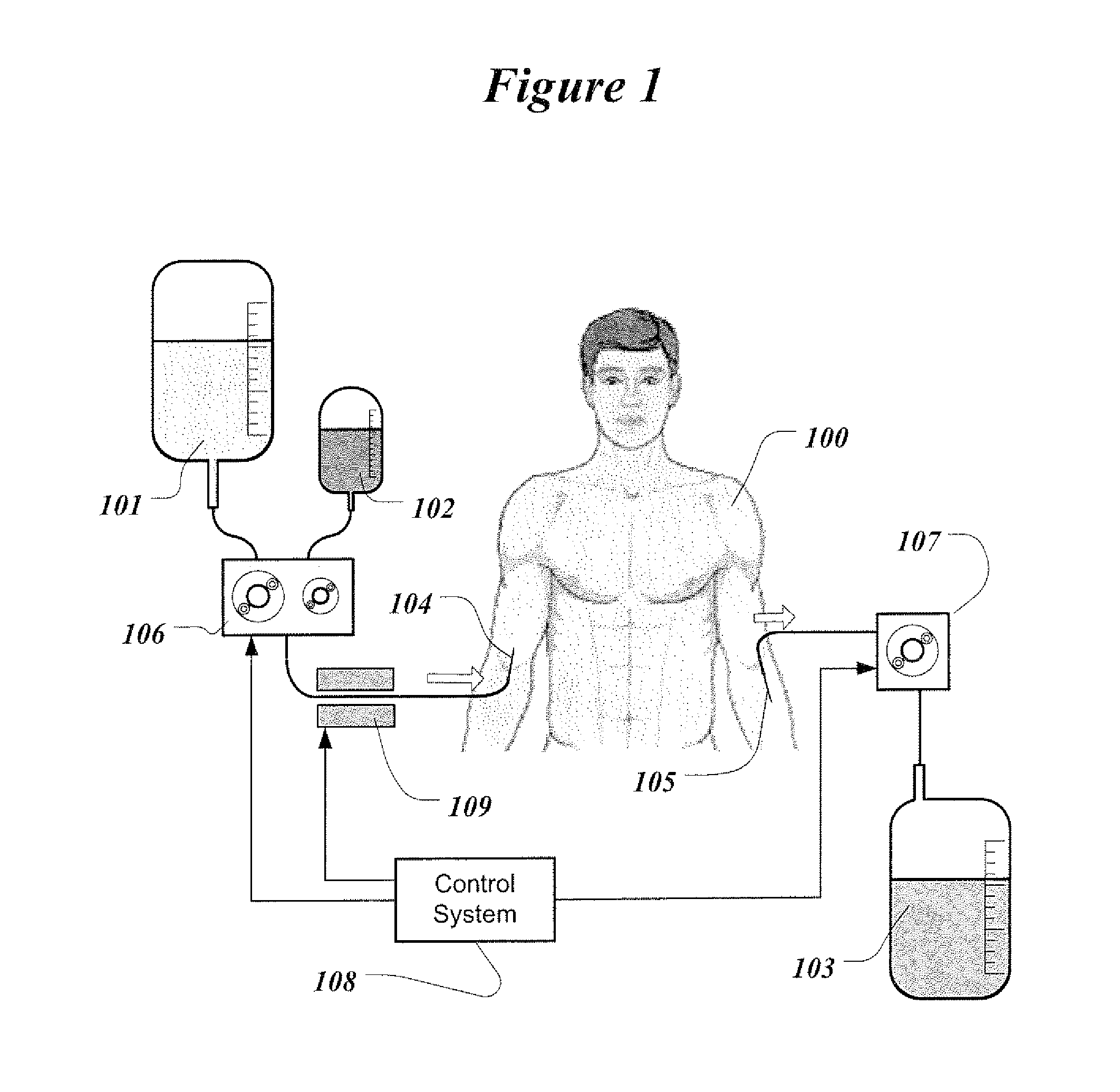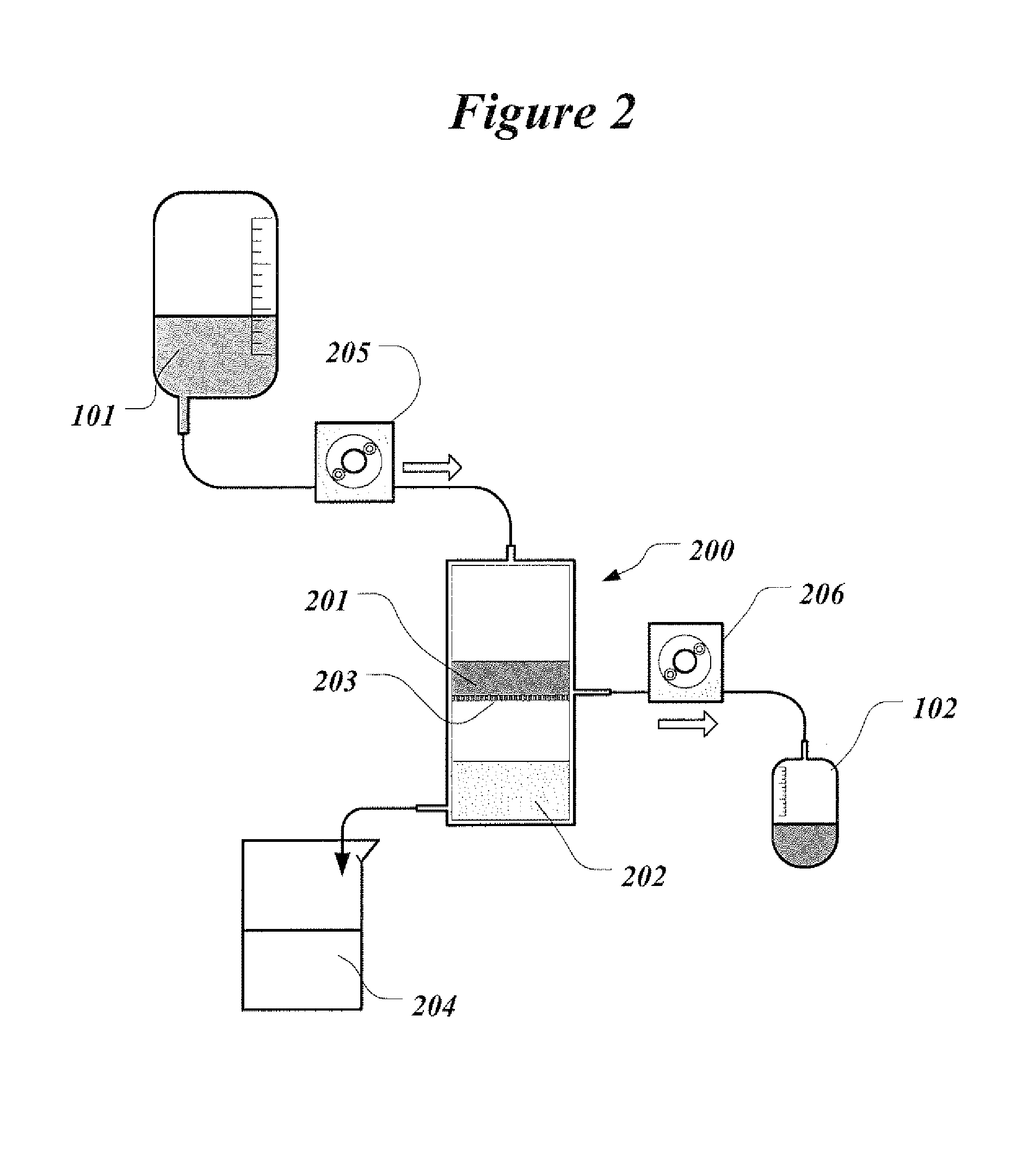Blood exchange dialysis method and apparatus
a dialysis and blood technology, applied in the field of blood exchange dialysis methods and apparatuses, can solve the problems of largely unfulfilled in less affluent and developing countries, irreversible and lethal esrd, and severe limitations in transplantation,
- Summary
- Abstract
- Description
- Claims
- Application Information
AI Technical Summary
Benefits of technology
Problems solved by technology
Method used
Image
Examples
Embodiment Construction
[0041]For the proposed clinical use, the capability of the invention is to replace renal function by periodically removing substantial volume of patient's blood and replacing it simultaneously with the reconstituted blood. The reconstituted blood contains patient's blood cells and proteins dissolved in the sterile physiologic solution that contains water and vital electrolytes. Small solute molecules and excess water are removed and discarded with the plasma water.
[0042]FIG. 1 illustrates the treatment of an ESRD patient with the present invention. Patient 100 can undergo treatment, for example, every day or every second day or four times a week. Treatment can be performed in a clinic or doctor's office. Potentially, home therapy can be envisioned for patients who desire to do so. Therapy requires access to the patient's venous blood. In this illustration, blood access is established with two needles. Infusion needle 104 and phlebotomy needle 105 are inserted into two separate veins...
PUM
 Login to View More
Login to View More Abstract
Description
Claims
Application Information
 Login to View More
Login to View More - R&D
- Intellectual Property
- Life Sciences
- Materials
- Tech Scout
- Unparalleled Data Quality
- Higher Quality Content
- 60% Fewer Hallucinations
Browse by: Latest US Patents, China's latest patents, Technical Efficacy Thesaurus, Application Domain, Technology Topic, Popular Technical Reports.
© 2025 PatSnap. All rights reserved.Legal|Privacy policy|Modern Slavery Act Transparency Statement|Sitemap|About US| Contact US: help@patsnap.com



